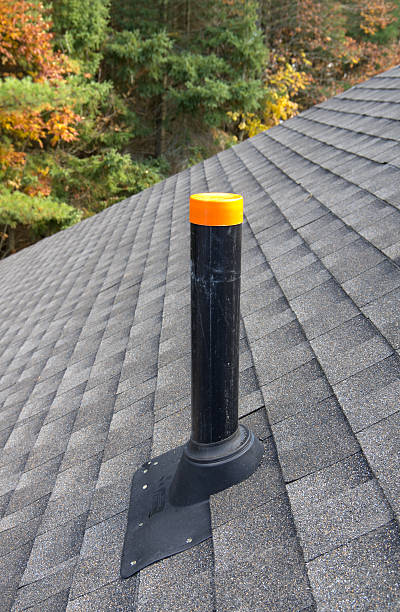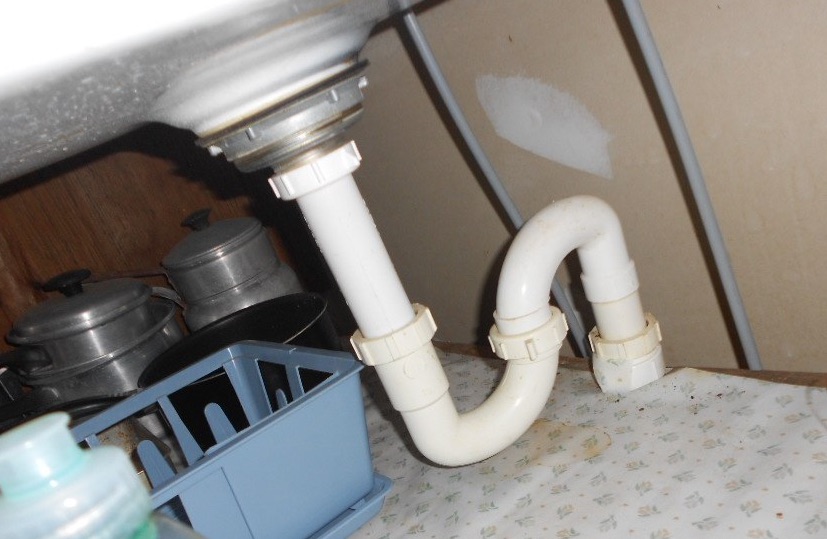Ensuring Adequate Ventilation in Your Plumbing System: The Reason
Ensuring Adequate Ventilation in Your Plumbing System: The Reason
Blog Article
We have stumbled on this post about What Is A Plumbing Vent & How Do They Work? below on the web and believe it made sense to quickly share it with you in this article.

Proper ventilation in plumbing systems is commonly forgotten, yet it is vital for keeping the capability and safety of your home's pipes. Air flow assists control atmospheric pressure, avoid the buildup of hazardous gases, and make sure the reliable removal of waste. In this overview, we will certainly discover the value of appropriate plumbing ventilation, how it functions, and the benefits it brings to your pipes system.
Exactly How Ventilation Functions in Pipes Equipments
Atmospheric Pressure Policy
Proper ventilation maintains balanced atmospheric pressure within the plumbing system. When water moves through pipes, it displaces air. Without ample ventilation, this variation can develop negative stress, leading to slow drains or siphoning of water from traps, which can create undesirable smells to seep into the home.
Protecting Against Sewer Gas Accumulation
One of the most important features of pipes vents is to stop sewer gases, such as methane and hydrogen sulfide, from accumulating within the home. These gases can pose serious health risks and are highly flammable. Vent pipes enable these gases to get away securely outside.
Assisting in Waste Elimination
Ventilation assists in the efficient removal of wastewater by avoiding airlocks in the drainage system. When air can move easily through the vents, it permits water and waste to stream efficiently with the pipes, reducing the danger of clogs and back-ups.
Benefits of Appropriate Air Flow
Improved System Performance
Appropriately ventilated plumbing systems run more efficiently, with fewer obstructions, faster draining pipes, and much less pressure on the pipelines. This effectiveness extends the life-span of the plumbing system.
Improved Air Quality
By protecting against drain gases from entering your home, proper air flow contributes to much better indoor air high quality, making your living environment healthier and a lot more comfortable.
Protecting Against Water Damages
Ample air flow assists avoid water from being siphoned out of catches, which can cause drain gases getting in the home and triggering water damages in time.
Actions to Guarantee Correct Ventilation
Consulting Plumbing Codes
Always consult neighborhood pipes codes when making or customizing your pipes system. These codes offer the required guidelines for correct venting and guarantee your system fulfills security standards.
Routine Inspection and Upkeep
Regular inspections can assist identify potential air flow issues before they come to be significant issues. Maintenance tasks, such as cleaning up air vent pipelines and checking for blockages, are vital for keeping the system in good working order.
Specialist Setup
For new installations or significant adjustments, it's a good idea to work with a specialist plumbing professional. They have the proficiency to ensure the ventilation system is appropriately developed and installed according to code.
Understanding Air Flow in Pipes
Ventilation in pipes describes the network of pipes that permit air to move with the drain system. These vents offer numerous functions, including regulating atmospheric pressure within the pipelines, avoiding sewage system gases from going into the home, and helping in the smooth flow of wastewater.
Sorts Of Plumbing Vents
Key Heap Vent
The major stack vent, likewise known as the vent stack, is the main air vent in a pipes system. It expands from the major drainpipe align via the roof, allowing gases to escape and fresh air to enter the system.
Branch Vent
Branch vents connect to the major pile air vent and serve individual components, such as sinks, commodes, and showers. These vents make certain that each component has sufficient ventilation to function correctly.
Air Admittance Shutoff (AAV).
An Air Admission Valve (AAV) is a one-way shutoff that enables air to go into the pipes system without the demand for a typical vent pipe prolonging via the roofing. AAVs are generally used in improvements or locations where setting up a conventional vent is impractical.
Signs of Poor Air Flow in Plumbing.
Slow Draining Fixtures.
If your sinks, tubs, or bathrooms are draining gradually, it could be a sign of poor air flow. Insufficient air circulation can create a vacuum cleaner effect, making it tough for water to drain pipes appropriately.
Gurgling Appears.
Gurgling sounds originating from drains are commonly an outcome of air being sucked through water catches because of adverse pressure in the pipelines. This is a clear indicator of not enough air flow.
Unpleasant Smells.
Sewage system smells inside your home are a warning that your pipes system is not correctly ventilated. This could imply that sewer gases are not being appropriately aired vent outside, bring about possibly unsafe conditions.
Usual Air Flow Mistakes.
Insufficient Vent Sizing.
Using undersized air vent pipelines can lead to poor air circulation and stress imbalances in the system. It's vital to utilize vents that satisfy the specific requirements of your plumbing system.
Improper Vent Placement.
Placing vents as well much from the components they serve can lower their performance. Appropriate positioning ensures that air can move freely and effectively through the system.
Ignoring Code Needs.
Building regulations supply specific guidelines for pipes air flow. Disregarding these codes can lead to a system that falls short to work properly and might bring about costly repair work or health hazards.
Final thought.
Proper air flow is an important part of any pipes system, making certain that it functions efficiently and securely. By comprehending the value of air flow, identifying the indicators of inadequate ventilation, and taking actions to preserve your system, you can protect against expensive problems and secure your home's air top quality.
4 Things You Should Know About Your Plumbing Vents
What Plumbing Vents Are
Also called a vent stack, a plumbing vent is a vertical pipe attached to your drain line that runs through your roof. The plumbing vent pipe, or plumbing air vent, removes gas and odors from your plumbing system and allows fresh air to enter the pipes, helping the water to flow out of the drain pipes.
What Plumbing Vents Do
Plumbing vents have two basic functions. One of which is to allow unpleasant smelling wastewater and sewer gasses to escape your plumbing system instead of entering your home. Plumbing vent pipes are typically located on roofs, away from windows, to ensure the fumes exit the home completely.
The other function of the plumbing vent is to move fresh air into your plumbing system. This helps move water through every plumbing fixture in your house, like toilets and sink drains. Think of the way in which you need to let a little air into the bottle as you pour soda in order to make the drink flow smoothly.
Different Types of Plumbing Vents
True vent: This is the most common vent option. In simplest terms, a true vent is a vertical pipe attached to your drain line that exits through the roof. They often function as the main vent that other fixtures can connect to. Re-vent pipe or auxiliary vent: Attached to the drain line near specific plumbing fixtures, re-vent pipes run up and over to connect to the main vent. Common vent: Two plumbing fixtures installed on opposite sides of a wall are typically tied into the vent stack using something known as a sanitary cross. Wet vent: This venting option operates as a drain pipe and a vent at the same time. Wet vent drainage systems drain water from one fixture while venting the air from another. Although they’ve been used for over 100 years, wet vent systems have only recently been added to the plumbing code in many areas. If you’re planning on installing one in a bathroom remodel, make sure you check your local code prior to construction. Loop vent: For free-standing fixtures like kitchen island sinks, loop vents are ideal. These vent pipes run under the floor, rise from the P-trap, and create a loop inside the cabinet sink. Air admittance valve: An AAV is a one-way mechanical valve typically installed at the site of the plumbing fixture. AAVs allow venting to occur without having to tie into a larger venting system. They’re ideal for venting fixtures where you aren’t able to easily connect to an existing vent system. Common Plumbing Vent Issues
Although vent pipes typically don’t have water flowing through them, they’re still subject to many typical plumbing issues. For example, clogs are one of the most common problems associated with sewer vent pipes. If your vent pipe gets clogged, all of your plumbing fixtures tied into the vent stack will be affected.
A sink with a slow drain that bubbles and gurgles or a strong sewage smell around your toilet are both indicators that your toilet vent pipe is clogged. Because most vent pipes exit through the roof, old leaves, twigs or even a bird’s nest could be clogging the pipe.
Clogs in your vent pipe system cause a buildup of negative pressure, meaning that water won’t be able to flow out of your home very well. It’s similar to putting your finger over the opening of a straw to trap water inside. When you remove your finger, the water is able to flow out of the straw.
If you suspect you have any blockage in your vent, make sure you have a professional come examine the situation. Left unchecked, a blocked air vent can lead to other costly repairs, like leaks and sediment buildup.
Under Pressure
Pipe vents are essential aspects of a home’s plumbing system. Owning a home means learning about all sorts of things you never put much thought into before. But by understanding as much as you can about the important systems of your home, you can keep those budgets intact and those anxiety levels low.
https://www.homeserve.com/en-us/blog/home-improvement/plumbing-vents/

I came across that page about Essential Plumbing Vent Pipes: Understanding Their Role while doing a search on the search engines. Sharing is nice. Who knows, you may very well be doing someone a favor. Bless you for your time. Revisit us soon.
Request An Estimate Report this page